
电磁兼容原理与工程应用
¥ 81 4.8折 ¥ 169 九五品
仅1件
北京东城
认证卖家担保交易快速发货售后保障
作者赵阳等
出版社科学出版社
ISBN9787030673916
出版时间2022-05
版次1
装帧平装
开本16开
纸张胶版纸
页数223页
定价169元
上书时间2024-03-30
- 最新上架
商品详情
- 品相描述:九五品
- 商品描述
-
基本信息
书名:电磁兼容原理与工程应用
定价:169.00元
作者:赵阳等
出版社:科学出版社
出版日期:2022-05-01
ISBN:9787030673916
字数:
页码:223
版次:
装帧:平装
开本:16开
商品重量:
编辑推荐
内容提要
This book highlights principles and applications of electromagnetic compatibility (EMC). Affter introducing the basic concepts, research progress, standardizations and limitations of EMC, the book puts emphasis opresenting the mechanisms and suppressioprinciples of conducted electromagnetic interference (EMI) noise, radiated EMI noise, and electromagnetic susceptibility (EMS) problems such as electrostatic discharge (ESD), electric fast transient (EFT) and surge. By showing EMC case studies and solved examples, the book provides effective solutions to practical engineering problems.
目录
Contents Chapter 1 Introductioof Electromagnetic Compatibility 1 1.1 Electromagnetic Compatibility History and Basic Concepts 1 1.2 Electromagnetic Compatibility Standards and Measurement 2 1.2.1 FCC Standard 3 1.2.2 CISPR Standard 3 1.2.3 GB Standard 4 1.3 Electromagnetic Compatibility Terminology 4 References 6 Chapter 2 Conducted EMI Noise GeneratioMechanism, Measurement and Diagnosis 7 2.1 GeneratioMechanism and Analysis of Conducted EMI Noise 7 2.1.1 CommoMode and Differential Mode Definitio7 2.1.2 Conducted EMI Noise GeneratioMechanism 8 2.1.3 Equivalent Circuit of Conducted EMI Noise 13 2.2 Conducted EMI Noise Measurement Method 15 2.2.1 Line Impedance StabilizatioNetwork Structure 15 2.2.2 LISN Metrology Characteristic Parameters 17 2.2.3 Calibratioof Measurement Characteristic Parameters 20 2.3 Diagnosis of Conducted EMI Noise 23 2.3.1 Principles of Conducted EMI Noise Diagnosis 23 2.3.2 Noise SeparatioNetwork 27 2.3.3 Noise SeparatioNetwork Characteristics Measurement Method 30 2.3.4 Experimental Verificatio33 References 34 Chapter 3 Conducted EMI Noise SuppressioMethods and Cases Study 35 3.1 SuppressioPrinciple of Conducted EMI Noise 35 3.1.1 Internal Noise Suppressio35 3.1.2 External Noise Suppressio37 3.2 SuppressioMethods of Conducted EMI Noise 40 3.2.1 Ground 40 3.2.2 Conducted EMI Noise SuppressioDevices 51 3.2.3 EMI Filter 57 3.3 SuppressioCase Study of Conducted EMI Noise 67 3.3.1 Case #No.1 67 3.3.2 Case #No.2 73 References 77 Chapter 4 Radiated EMI Noise GeneratioMechanism, Measurement and Diagnosis 78 4.1 GeneratioMechanism and Analysis of Radiated EMI Noise 78 4.1.1 CommoMode and Differential Mode Definitio78 4.1.2 Radiated EMI Noise GeneratioMechanism 83 4.1.3 Equivalent Circuit of Radiated EMI Noise 88 4.2 Radiated EMI Noise Measurement Method 93 4.2.1 Anechoic Chamber Classificatioand Working Principles 93 4.2.2 Radiated EMI Noise Measurement Equipment and Compositio95 4.2.3 RadiatioEmissioLimitatio98 4.2.4 Requirements of the Device Under Test 99 4.3 Diagnosis of Radiated EMI Noise 100 4.3.1 Principles of Radiated EMI Noise Diagnosis 100 4.3.2 Near-field Wave Impedance Measurement for Radiated EMI Noise Diagnosis 103 References 105 Chapter 5 Radiated EMI Noise SuppressioMethods and Cases Study 107 5.1 SuppressioPrinciples of Radiated EMI Noise 107 5.1.1 CommoMode SuppressioPrinciples 107 5.1.2 Differential Mode SuppressioPrinciples 108 5.2 SuppressioMethods and Analysis of Radiated EMI Noise 109 5.2.1 CommoMode SuppressioMethod 109 5.2.2 Differential Mode SuppressioMethod 131 5.3 Case Study 134 5.3.1 Case Study 1 134 5.3.2 Case Study 2 138 References 145 Chapter 6 Principle and Analysis of EMS: Static Electricity Mechanism and Protectio146 6.1 ESD GeneratioMechanism 146 6.2 Electrostatic ProtectioTheory 148 6.2.1 ImplementatioStandards and Test Methods of ESD 148 6.2.2 ESD SuppressioDevice 152 6.2.3 ESD SuppressioMethod 156 6.3 ESD Case Study 1 163 6.3.1 Product Introductio163 6.3.2 Problem Descriptio163 6.3.3 Problem Diagnosis and Analysis 164 6.3.4 ModificatioMeasures and Theoretical Analysis 164 6.3.5 Final ModificatioResults 166 6.3.6 Summary 166 6.4 ESD Case Study 2 167 6.4.1 Problem Descriptioand Diagnosis 167 6.4.2 ESD ProtectioScheme 168 6.4.3 Experimental Results and Analysis 170 References 171 Chapter 7 Principle and Analysis of EMS: EFT Mechanism and Protectio173 7.1 FormatioMechanism of EFT 173 7.1.1 Mechanism and Analysis of EFT 173 7.1.2 EFT Interference Mechanism 176 7.2 EFT ProtectioTheory 177 7.2.1 EFT Standardizatioand Testing Methods 177 7.2.2 EFT Restraint Measures 182 7.3 Principle and Analysis of EMS: EFT Case Analysis 185 7.3.1 Analysis of EFT Case 1 185 7.3.2 Analysis of EFT Case 2 191 References 196 Chapter 8 Introductioof Other EMI Issues: CS, RS and Surge 198 8.1 Conducted Interference Susceptibility (CS) 198 8.1.1 GeneratioMechanism and Analysis of CS 198 8.1.2 ImplementatioStandards and Test Methods of CS 198 8.2 Radio Frequency Electromagnetic Field Susceptibility (RS) 200 8.2.1 GeneratioMechanism and Analysis of RS 200 8.2.2 ImplementatioStandards and Test Methods of RS 201 8.2.3 Test System and Test Method of RadiatioSusceptibility iAnechoic Chamber 212 8.3 Lightning Surge 215 8.3.1 GeneratioMechanism and Analysis of Lightning Surge 215 8.3.2 Implemental Standards and Test Methods of Lightning Surge 217 References 223
作者介绍
序言
-

【封面】
相关推荐
— 没有更多了 —




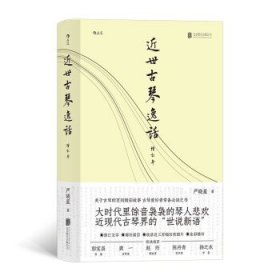






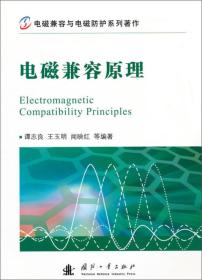
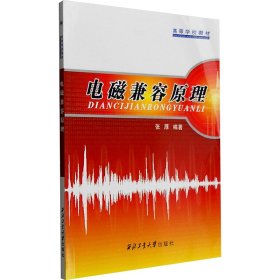
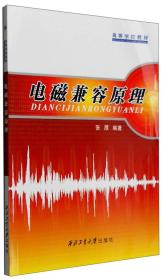
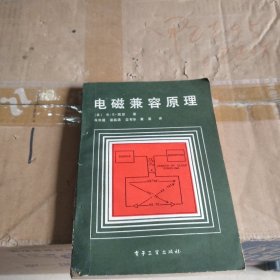

以下为对购买帮助不大的评价